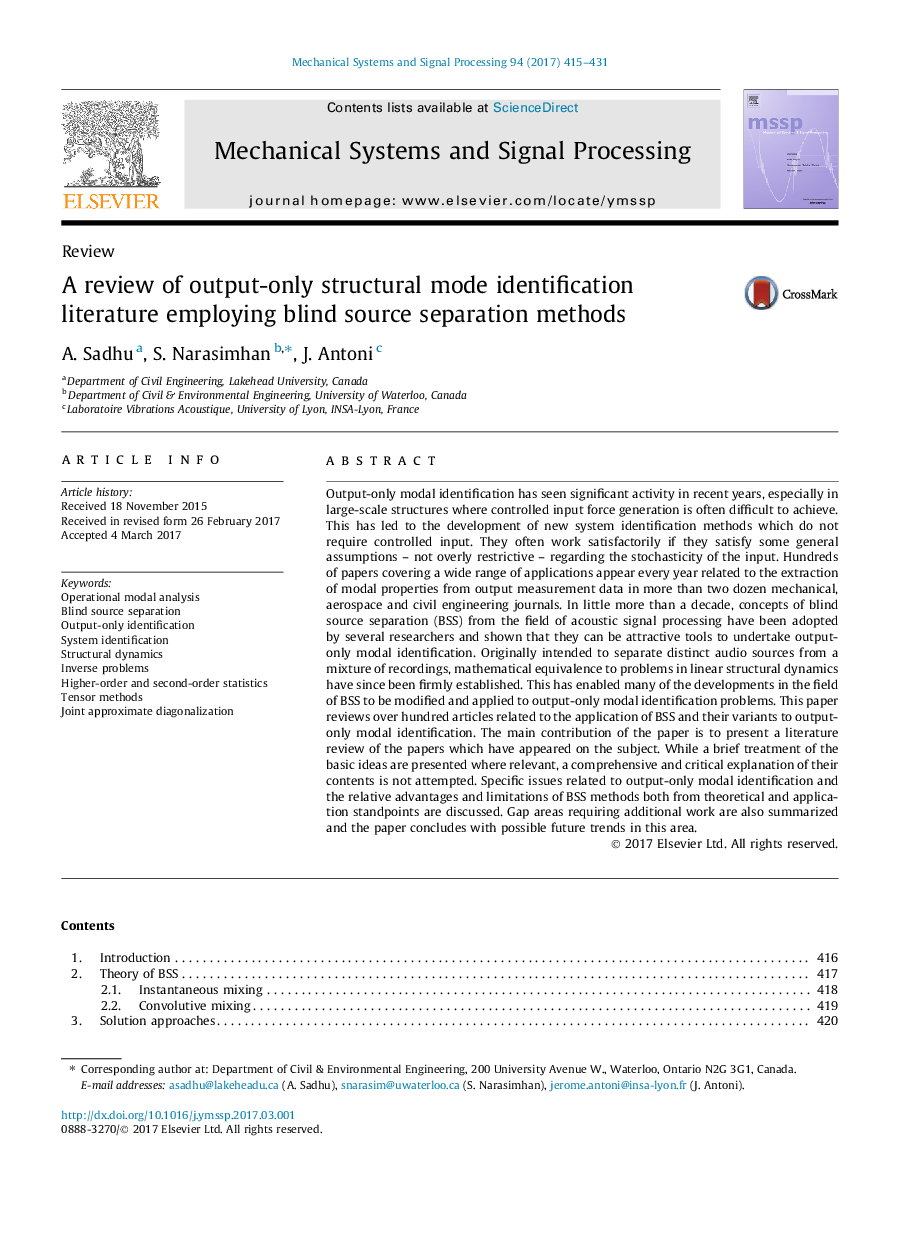| Article ID | Journal | Published Year | Pages | File Type |
|---|---|---|---|---|
| 4976949 | Mechanical Systems and Signal Processing | 2017 | 17 Pages |
Abstract
Output-only modal identification has seen significant activity in recent years, especially in large-scale structures where controlled input force generation is often difficult to achieve. This has led to the development of new system identification methods which do not require controlled input. They often work satisfactorily if they satisfy some general assumptions - not overly restrictive - regarding the stochasticity of the input. Hundreds of papers covering a wide range of applications appear every year related to the extraction of modal properties from output measurement data in more than two dozen mechanical, aerospace and civil engineering journals. In little more than a decade, concepts of blind source separation (BSS) from the field of acoustic signal processing have been adopted by several researchers and shown that they can be attractive tools to undertake output-only modal identification. Originally intended to separate distinct audio sources from a mixture of recordings, mathematical equivalence to problems in linear structural dynamics have since been firmly established. This has enabled many of the developments in the field of BSS to be modified and applied to output-only modal identification problems. This paper reviews over hundred articles related to the application of BSS and their variants to output-only modal identification. The main contribution of the paper is to present a literature review of the papers which have appeared on the subject. While a brief treatment of the basic ideas are presented where relevant, a comprehensive and critical explanation of their contents is not attempted. Specific issues related to output-only modal identification and the relative advantages and limitations of BSS methods both from theoretical and application standpoints are discussed. Gap areas requiring additional work are also summarized and the paper concludes with possible future trends in this area.
Keywords
Related Topics
Physical Sciences and Engineering
Computer Science
Signal Processing
Authors
A. Sadhu, S. Narasimhan, J. Antoni,
